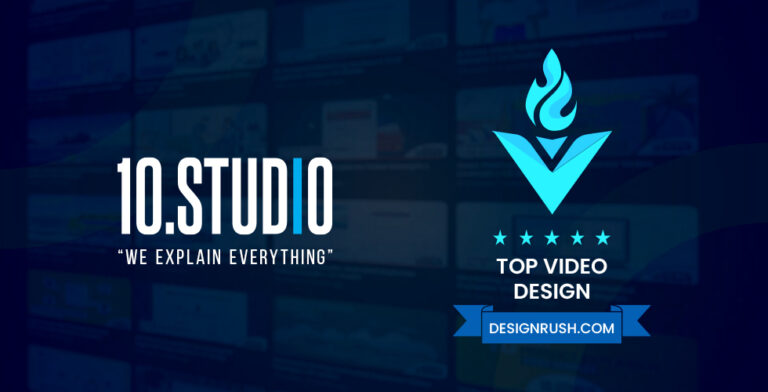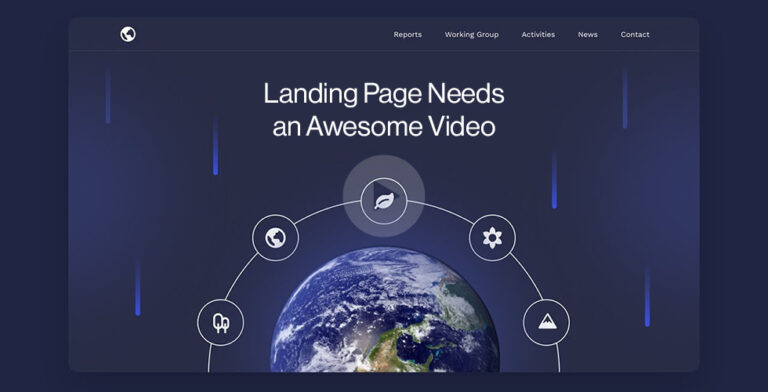An explainer video is a short marketing video typically used to describe a company or brand’s product or service. These videos are a very effective tool to give your audience a solid understanding of your offerings in a very short time span. You can use these videos in a variety of different places like on your website, email campaigns, presentations, ads, social media sites, etc.
Generally speaking, a customer does not want to go through ten pages of information before coming to understand what product or service you’re offering. To them, it feels like a big waste of time. This is where explainer videos come in!
These videos can condense the context of an entire service or product in a summarized form. However, there are several kinds of explainer videos that you can use. So, which format should you go for? To help you make an informed decision, here is a list of some of the most popular types of explainer videos.
9 Types Of Explainer Videos
1. 2D Character Animation
2D character animation is arguably one of the most popular forms of explainer videos. This video format is especially popular amongst startups because you can use these videos to create a scenario where the customer is interacting with your product or service.
That way your audience will have a much better idea about how to use your product before even seeing it for themselves.
This creates a sense of engagement between the product and the customer which can be a powerful tool to entice them to purchase the product. Therefore, if you want to portray a relatable interaction between your audience and product, then you can use 2D character animation.
2. Motion Graphics
Knowing about motion graphics can come in handy in many different cases. Although it is not as dynamic as 2D character animation, motion graphics can be used to give life to otherwise static images.
Let’s say you are scheduled to give a very important sales presentation at your next annual company meeting. Rather than just showing up with a bunch of slides that highlight the key information, you can use motion graphics to visually show changes in sales patterns, highlight trends, show demos, etc.
Studies found that having visual stimulation is a lot more effective for obtaining important information instead of just pictures. This type of explainer video is very popular in the tech industry as it can be used to explain complex concepts with relative ease.
3. Live-Action
Live-action elements work as an added graphical effect for videos. There are plenty of examples of this. For instance, if you recall ever watching an interview and seeing the person’s name appear on the bottom corner of the screen – that’s live-action.
You can also see live-action in play when you watch movies and the name of a particular country or area shows up. To put it simply, live-action acts as an animated graphical overlay for real-life videos, which portrays vital information that the audience should know about.
4. Whiteboard
As the name implies, whiteboard animation is a type of video where a scenario is presented to you by drawing it on a whiteboard with a hand. These videos are usually followed by a narration describing the scenario, hence creating a need to solve a problem.
Companies use whiteboard animation to pitch the idea of their products or services and how they can resolve the issue. Plus, the fluid motion of the hand drawing perfect pictures using different colored markers can feel quite satisfying to watch.
5. Outline
Outline videos are very simple and minimalistic. For this type of video, lines are used to draw very basic shapes and structures. Many startups use this video format to tell their audience about the company. Experts often wonder why this style is used so frequently. It’s likely that the answer is that these videos are very easy to make while still retaining a very classy minimalist feeling which is quite appealing.
6. Cutout Animation
If you have ever done arts and crafts, then you should have some idea about the style of this video. Basically, cutout animation features characters and objects cut from paper which are then animated for a scene.
Because of its simplicity, the viewer can focus more on what’s happening in the foreground rather than getting distracted by unnecessary details in the background. Plus, the cost of making these kinds of videos is quite low.
7. Kinetic Typography Animation
Kinetic typography is very similar to outline animation in the sense that both of these styles adopt a very minimalistic approach. However, this style of animation can be a bit too simple which can lead to the customer feeling like the company cutting corners when making the video.
Furthermore, the information presented in the video is mainly text-based which can cause the viewer to feel somewhat disengaged. Therefore, unless you are on a very tight budget, then you should consider using other more effective forms of marketing videos.
8. Infographic
Infographic videos are very effective at highlighting key numbers and figures. It makes information a lot more digestible and easy to understand. A lot of the time, it can be tough for general people to make sense of stats without understanding the context behind them.
Infographics help by distilling the numbers found on the rows and columns of a table into small bite-sized pieces of information. Plus, using infographics is a very smart way to convey the current condition of your company or the sales report of your product.
9. Screencast
The screencast is a style of video that is most prominently used by SaaS companies. It is a great way to showcase the company’s app or website to investors and the general public. The way this works is that the company records footage directly from the app or website.
They can then add some visual tricks like highlights, zooming, scaling, etc. to focus on the main features of the project. Additionally, when a person is using their phone or browsing through the internet, screencast can be used to add live footage.
Final Words
With so many different types of video formats to choose from, it can feel quite overwhelming to know which style would best suit your brand and appeal to your audience.
That is why we have set out on a journey to find the most popular types of explainer videos so that you have a better understanding of which of these formats are in high demand and which ones to avoid.







